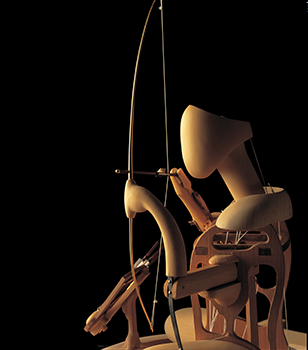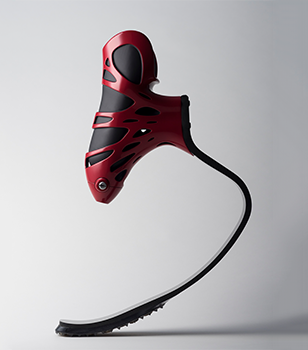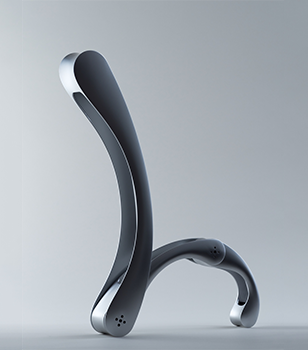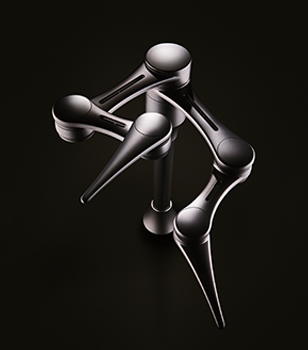- Date
March 27 to May 20, 2018
- Tuesday to Saturday
10 am - 10 pm
- Sundays and public holidays
10 am - 6 pm
- Fee
Free
From March 27, JAPAN HOUSE São Paulo unveils the advanced technologies of Japanese prototypes in the Prototyping in Tokyo - Shunji Yamanaka exhibit. Scheduled to take place through May 20 on the 2nd floor of the institution, the exhibition highlights the importance of prototypes as the core of technological creations, featuring pieces that also stand out for their unique beauty. Creations that are usually accessible only to closed communities will be showcased to share the researchers’ dreams and creations with the public at large, combining technology with a refined sense of Japanese aesthetics.
The alliance between the skill of Japanese artisans and the science of prototype technologies is the highlight of this exhibit, which brings together creations made by engineer and designer Shunji Yamanaka. A professor at the Institute of Industrial Science at Tokyo University, Yamanaka is a true ambassador of innovation in Japan, excelling for creating numerous and versatile technological innovations, from watches to automobiles, and as the brain behind major projects, such as a craft to take people to a few small planets, under development with JAXA - Japan Aerospace Exploration Agency. In addition to the exhibit, Shunji Yamanaka himself will convey part of this knowledge in a lecture that will be open to all and free of charge at JAPAN HOUSE São Paulo, on March 27. The designer will also lecture at Instituto Mauá as part of the Japanese center's initiative to expand its content beyond its headquarters on Avenida Paulista.
The Prototyping in Tokyo - Shunji Yamanaka exhibit is almost entirely interactive. In addition to being able to touch some of the prototypes, visitors will complete their experience getting to know items made on 3D printers, in different production processes, over and above numerous sketches of ideas. The exhibit is divided into three moments, considering structure and movement, texture and tactile sensation, and body sensation prototypes. In all, seven projects that reinforce and combine the Japanese sense of aesthetic and simplicity with inspiration in nature and high technology will be exhibited. These objects, which are created with tools developed at the Yamanaka Laboratory, allow for greater realism and, in some cases, evoke biosimilarity, making viewers believe, at first sight, that they are looking at living beings, not at pieces that use technological innovations. The exhibition drives reflection on the future that is being created and disseminated directly from Tokyo.
Visitors will come across prototypes that will impress them due to their richness of details, both in form and in their ability to move, such as the Ready to Crawl robot, made through additive manufacturing, pursuant to which all parts are produced at the same time so it can ‘be born’ fully assembled, like a living being - except for the motor that moves it -, allowing for tactile and texture sensations. Everything in its internal gears and outer packaging was created together. And, so, a variety of robots emerged, each with a different mode of locomotion, and this allowed exploring various forms of movement.
The exhibit also features the Rabbit Project, which develops and improves prostheses designed specifically for competitive racing, seeking harmony between human and artificial materials. The pieces being exhibited were developed for the Paralympic athlete Takakuwa Saki, who represented Japan during the London Paralympics, in 2012, and the Brazil Paralympics, in 2016. Another highlight is the Apostroph robot, created to study the behavior of living organisms and to explore one of the most fundamental of all, the act of standing. With a segmented body, made of multiple gently curved frames, each joint that connects the segments is fitted with a motor programmed to resist external force, so these motors rotate opposite to the force of gravity. Through this mechanism, Apostroph performs organic movements similar to those used by humans to learn to stand, a clear expression of a living organism’s universal search to find balance.
‘Prototyping in Tokyo - Shunji Yamanaka’
March 27 to May 20, 2018
JAPAN HOUSE São Paulo – Avenida Paulista, 52
Opening hours:
Tuesday to Saturday, from 10 am to 8 pm
Sundays and public holidays, from 10 am to 6 pm
Free admission
Check out the schedule at facebook.com/JapanHouseSP








